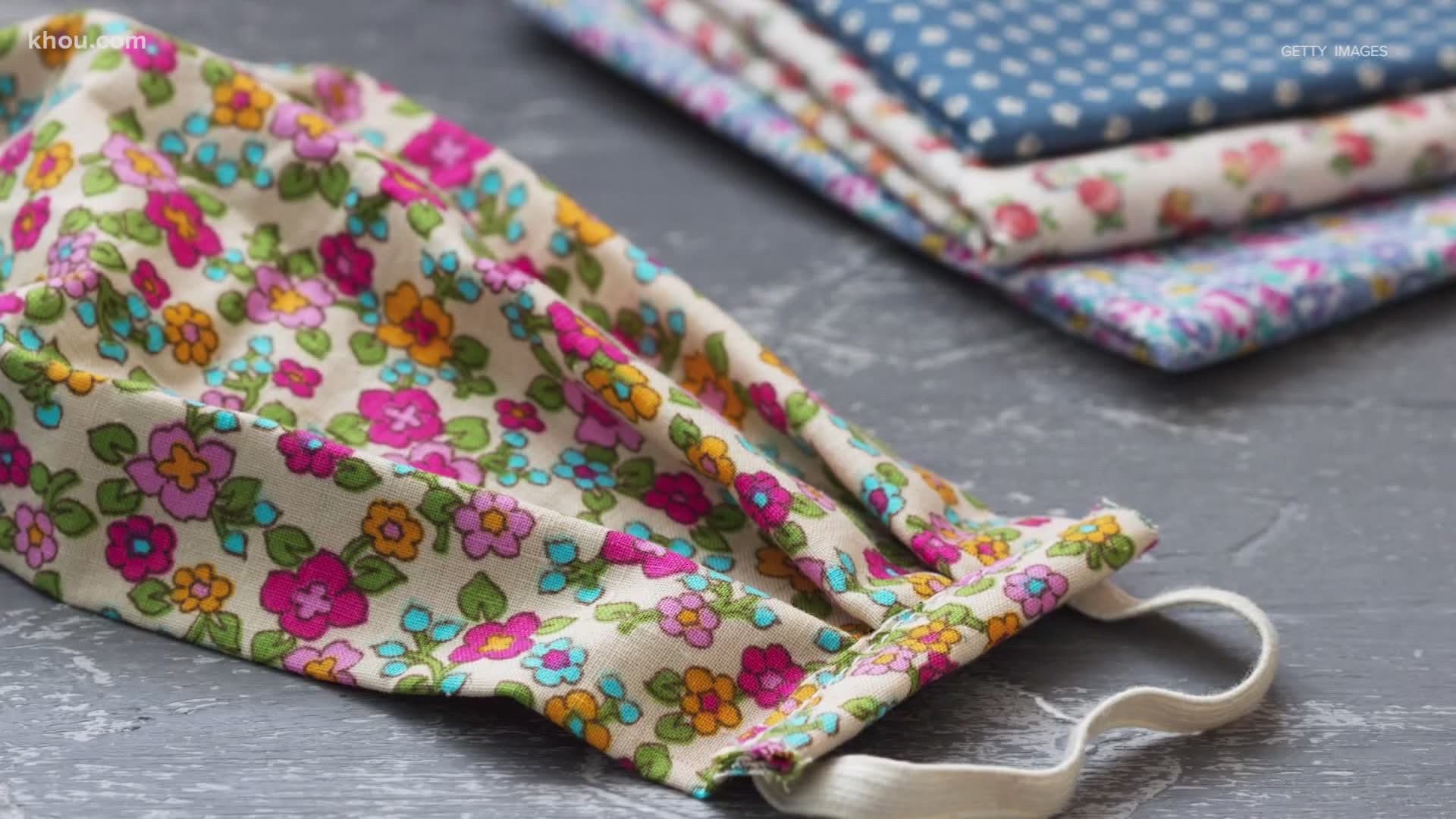HOUSTON — Health officials say we should all be covering our faces in public to slow the spread of COVID-19.
A lot of people are making their own masks from materials they have at home, but not all fabrics are created equally when it comes to safety.
Researchers at a Texas A&M University lab tested which household items do the best job of blocking particles in the air.
An N95 mask blocks 100 percent of particles.
A coffee filter would only block 25 percent of the coronavirus floating through the air.
A bandana folded in two layers isn’t much better; only 28 percent of particles are blocked.
The study found you are much better off using a polyester shower curtain or cotton pillowcase. Both were around 55 percent effective.
The Texas A&M lab found the next best option is a bra cup, which blocks 83 percent of airborne particles.
The household fabrics that performed the best are vacuum bags and air purifier filters. Vacuum bags protect you against 94 percent of particles in the air. Air filters were just as effective as N95 masks.
What do you do with this information? Researchers say you should still wear a DIY cloth mask, but insert or sew in a layer of the better fabric to keep yourself as safe as possible.
Coronavirus symptoms
The symptoms of coronavirus can be similar to the flu or a bad cold. Symptoms include a fever, cough and shortness of breath, according to the Centers for Disease Control. Some patients also have nausea, body aches, headaches and stomach issues. Losing your sense of taste and/or smell can also be an early warning sign.
Most healthy people will have mild symptoms. A study of more than 72,000 patients by the Centers for Disease Control in China showed 80 percent of the cases there were mild.
But infections can cause pneumonia, severe acute respiratory syndrome, kidney failure and even death, according to the World Health Organization. Older people with underlying health conditions are most at risk for becoming seriously ill. However, U.S. experts are seeing a significant number of younger people being hospitalized, including some in ICU.
The CDC believes symptoms may appear anywhere from two to 14 days after being exposed.
Human coronaviruses are usually spread through...
- The air by coughing or sneezing
- Close personal contact, such as touching or shaking hands
- Touching an object or surface with the virus on it, then touching your mouth, nose or eyes before washing your hands.
Help stop the spread of coronavirus
- Stay home when you are sick.
- Eat and sleep separately from your family members
- Use different utensils and dishes
- Cover your cough or sneeze with your arm, not your hand.
- If you use a tissue, throw it in the trash.
- Follow social distancing
Lower your risk
- Wash your hands often with soap and water for at least 20 seconds. If soap and water are not available, use an alcohol-based hand sanitizer.
- Avoid touching your eyes, nose, and mouth with unwashed hands.
- Avoid close contact with people who are sick.
- Clean and disinfect frequently touched objects and surfaces.
- If you are 60 or over and have an underlying health condition such as cardiovascular disease, diabetes or respiratory illnesses like asthma or COPD, the World Health Organization advises you to try to avoid crowds or places where you might interact with people who are sick.
Get complete coverage of the coronavirus by texting 'FACTS' to 713-526-1111.

